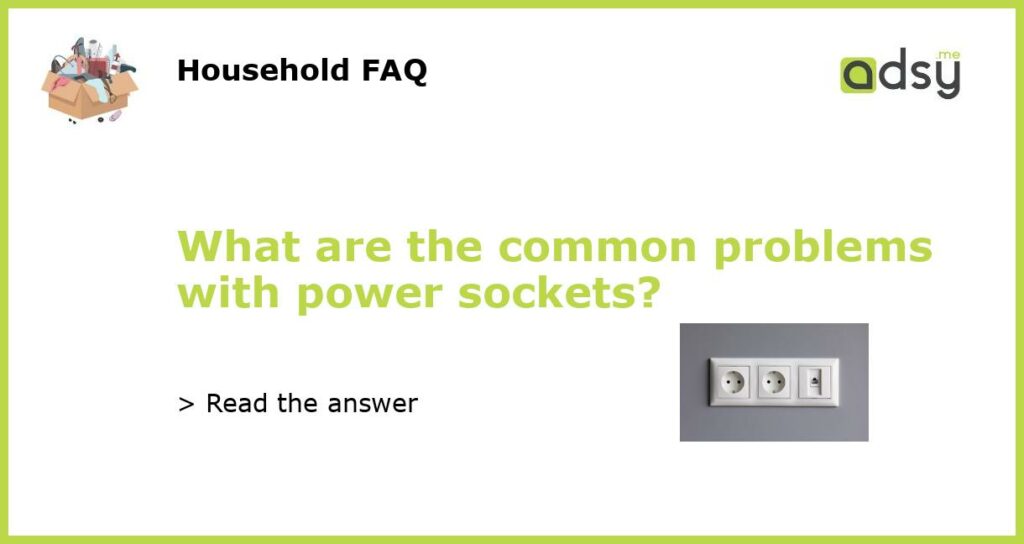Loose Connections
One of the most common problems with power sockets is loose connections. Over time, the pins in a socket can become worn or bent, resulting in a loose connection between the plug and the socket. This can lead to intermittent power, where the power supply may cut out and then come back on again. Loose connections can also cause sparks or electrical arcing, which can be dangerous and potentially start a fire.
Overloading
Another common problem with power sockets is overloading. This occurs when too many devices are connected to a single socket or extension lead, causing it to draw more power than it can safely handle. Overloading can lead to overheating, which can damage the socket and create a fire hazard. It’s important to never exceed the maximum load capacity of a socket or extension lead and to distribute devices across multiple sockets to avoid overloading.
Damaged or Faulty Wiring
Damaged or faulty wiring is another common issue with power sockets. Over time, the insulation around the wires can become worn or damaged, exposing the live wires. This can result in a short circuit or electric shock if you come into direct contact with the exposed wires. Faulty wiring can also cause power fluctuations, where the voltage levels in the socket fluctuate, leading to unstable power supply and potential damage to connected devices.
Improper Installation
Improper installation of power sockets is also a common problem. This can include incorrect wiring, inadequate grounding, or using the wrong type of socket for the electrical system. Improper installation can increase the risk of electrical shock, fire, and damage to connected devices. It’s important to ensure that power sockets are installed by a qualified electrician and meet the necessary safety standards and regulations.
Damaged Socket or Plug
A damaged socket or plug is another common problem that can occur with power sockets. Physical damage, such as a cracked socket or bent pins, can prevent the plug from making a proper connection, resulting in power loss or intermittent power. Damaged plugs can also pose a safety risk, as they may expose live wires or cause electrical arcing. It’s important to regularly inspect and replace any damaged sockets or plugs to ensure safe and reliable power connections.






